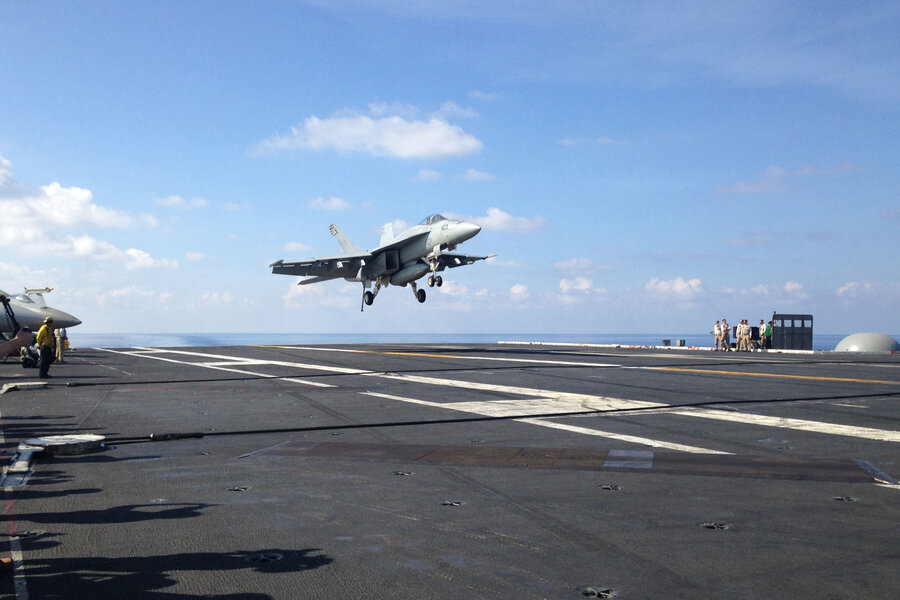Chinese fighter jets in near collision with US aircraft, Pentagon says
In the latest episode of the ongoing saga in the South China Sea, Pentagon officials said Wednesday that two Chinese fighter jets had carried out an “unsafe” intercept of a US reconnaissance plane.
The incident, which took place Tuesday in international airspace over the contested body of water, involved “a routine US patrol”, in which the Chinese jets came within 50 feet of the reconnaissance plane, forcing the US pilot to dive 200 feet to avoid a collision.
While China disputes the allegations, the disagreement is part of ongoing tensions in the region, as interested parties seek to find a balance between avoiding conflict and defending what they each regard as their legitimate rights.
“If this happens again next week, and then the week after that, it would signal a return to a more tactically aggressive phase in China’s attempts to get the U.S. to back off,” Ashley Townshend, a visiting fellow at the Asia-Pacific Center at Fudan University, Shanghai, told Bloomberg.
“No one can tell at what level this behavior was sanctioned. We can’t read too much into one incident,” he added.
In spite of the fact that this encounter needs to be regarded in the wider context of the ongoing struggle in the South China Sea, Pentagon officials were at pains to avoid undue alarmism, highlighting the fact that they have “made progress reducing risk between our operational forces and those of the People’s Republic of China by improved dialogue at multiple levels.”
“Over the past year, D.O.D. [Department of Defense] has seen improvements in P.R.C. [People’s Republic of China] actions, flying in a safe and professional manner,” a Pentagon official told The New York Times.
China rejected the claim there was anything unsafe about the incident, Foreign Ministry spokesman Hong Lei saying “the US allegations are untrue” and telling reporters that “the Chinese aircraft kept a safe distance.”
Whatever the details, the disagreement represents a spike in activity, coming just a week after China scrambled jets as a US Navy ship undertook a “Freedom of Navigation” exercise, sailing close to a disputed reef in the South China Sea.
In the eyes of China, it is the United States that is the aggressor, interfering in a region relatively close to the shores of the Chinese mainland, yet far from US soil.
“Who is engaging in massive military exercises in this region?” asked China's Foreign Minister Wang Yi in a recent interview with Al Jazeera. “Who is sending a lot of advanced weaponry to the South China Sea and building new military bases? The answer is all too clear: the United States.”
Washington would counter that its activities are designed simply to exercise the right of “innocent passage,” seeking in fact to “avoid any conflict with China’s sovereignty claims,” as Julian Ku, professor of law at Hofstra University, wrote in Foreign Policy.
“Instead, by conducting the operations under the rules of 'innocent passage,' the U.S. Navy assumed China might have sovereign rights,” wrote Dr. Ku, “but simply challenged China’s domestic law requirement that foreign warships give prior notification before entering what China claims is its territorial sea.”
And the US is not alone in its efforts to counter Chinese activities, as the People’s Republic lays claim to various islands and reefs in the South China Sea and undertakes the construction of installations, some of which are arguably military in nature.
In a claim filed by the Philippines in 2013, the United Nations is considering the legitimacy of China’s claims in the South China Sea. The ruling is expected in the coming weeks, and while it may have little practical influence on China, it could undermine or legitimize the sovereignty claims.
This report contains material from Reuters and the Associated Press.







